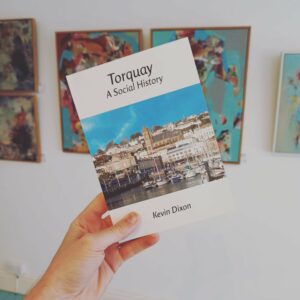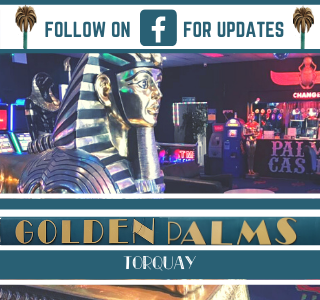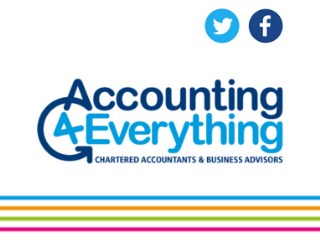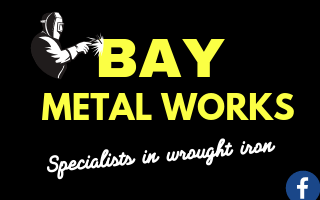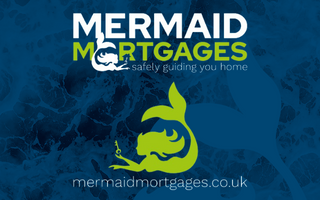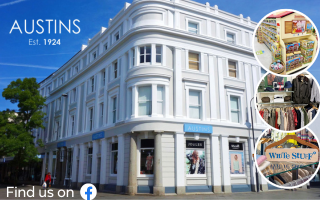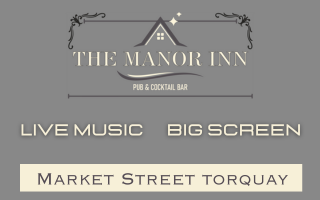“A garish flag, to be the aim of every dangerous shot” William Shakespeare
When a Torquay town centre pub was having a bit of a makeover, one of the improvements was to have a few external flag poles. A debate then began over which flags to use. One suggestion was to feature the green and white Devon flag, which many assumed to be the ancient symbol of Devon; although it was wondered why we don’t see it much in Torbay.
Just a harmless and colourful bit of cloth you may think?
It isn’t that easy. This is all about vexillology, the study of flags and their meanings.
First of all, the Devon flag isn’t an ancient symbol of our county. It was just made up and only dates from 2003. For some time, the popularity of Cornwall’s flag had caused Devon to seek its own. Bob Burns, a Devonian living in North Lincolnshire, was one of those who started the original campaign, “I have long thought that Devon should have its own flag, to act as a symbol of pride for the people of Devon,”
“Devonians are only too aware of the ubiquitous Cornish Flag, which can often be seen in the form of car bumper stickers, on vehicles entering Devon from Cornwall”, said Bob. “Until now, there has been no way that Devonians could similarly express their pride in their own County of Devon.”
The ‘need’ for a Devonian flag was also raised in an interview on BBC Radio Devon in 2002 by the county’s contingent of scouts as they prepared to travel to the 20th World Scout Jamboree.
The scouts were unaware of a Devon flag and wondered if any of the listeners knew of a flag they could use. The BBC took up the search and asked the public to send in designs.
After a vote run by the BBC’s website, the winning design took 49% of the votes cast. From Lincolnshire a delighted Bob commented, “When Devonians were given the opportunity of selecting a flag for Devon, they voted in their hundreds and chose a design which all Devonians should be proud of.”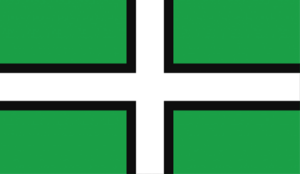 The new Devon flag was made of three colours: green, black and white.
The new Devon flag was made of three colours: green, black and white.
The predominant green, we’re told by the enthusiastic romantics promoting the flag, represented “the colour of the rolling and lush Devon hills”. Then, “the black represents the high and windswept moors (Dartmoor and Exmoor) and the white represents both the salt spray of Devon’s two coastlines and the China clay industry (and mining in general).”
As part of a tenuous claim to a historical precedent it was pointed out that Lord Exmouth flew a dark green flag with white circles at the Bombardment of Algiers on the 27 August 1816.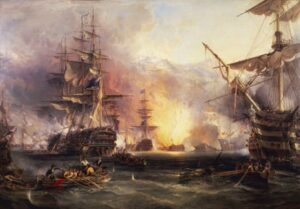
Lord Exmouth flew a dark green flag with white circles at the Bombardment of Algiers in August 1816
Devon had long been preyed upon by barbary pirates from North Africa. Hence, the attack by Britain and the Netherlands to suppress and to free Christian slaves was seen as a righteous war which fitted in well with modern sensibilities.
To promote the Devon flag we have the Devon Flag Group which proclaimed, “The flag emphasises the county’s history, especially it’s Celtic roots which are very strong. It’s a flag for everyone with Devon in their hearts, a unifying symbol, not just for people born, raised or living here.”
The Flag Group suggested a variety of dates when it would be appropriate for the banner to be flown all over the world; such as the Devon County Show, celebrations of famous maritime events or the feast days of Devon’s saints.
The Devon flag was quickly adopted in most parts of the county and in October 2006 gained “official” recognition when Devon County Council raised the flag outside County Hall. Tesco’s further helped by using the Devon flag on the packaging of local produce.
Tourism chiefs quickly recognised a marketing ploy. South West Tourism’s Malcolm Bell, said, “You see what it’s done for Scotland and Wales, as well as Cornwall. It gives the idea that somewhere is special, and it gives the feeling of a sense of place. It says that this is a place that’s proud of where it is and is proud of itself.”
Local variants then emerged. Our neighbours in Newton Abbot, for intance, produced their own flag which was adopted by the Town Council in 2009. It incorporates a depiction of the tower of St Leonard, better known as the Clock Tower.
So far, so good.
Then the naysayers got started.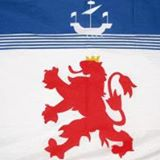 First to complicate things was another group, ‘Bring Back the Devon Flag’, which appears to feature a drowning lion, who stated that the new flag wasn’t the real one anyway but a modern imposter.
First to complicate things was another group, ‘Bring Back the Devon Flag’, which appears to feature a drowning lion, who stated that the new flag wasn’t the real one anyway but a modern imposter.
The main criticism, however, came from our friends across the Tamar who still haven’t really got over being occupied by the English King Athelstan when he annexed Cornwall in 936.
Didn’t you just see this coming?
Perhaps naively, perhaps provocatively, the Devon flag was dedicated to Saint Petroc who died in 564.
With Saint Piran and Saint Michael, Petroc is one of the patron saints of Cornwall, even though he was born in Wales and ministered to both the Britons of Devon and Cornwall. The county’s (“country’s”) leading historical scholar, Prof Philip Payton, accused Devon of “wanting to invent traditions…The idea of naming the flag after St Petroc is gratuitously offensive.”
St Piran’s flag, a white cross on a black background, is particularly emblematic for the Cornish. Though it’s probably only been around since the early nineteenth century, it has become a rallying point for Cornish independence and embodies the ancient Celtic heritage that nationalists believe distinguishes them from us English. Cornish patriots accordingly saw the new Devon flag as an attempt to “hijack” their culture and to promote “Devonwall” in oder to dilute Cornish identity. The Devon flag then became part of a long-term conspiracy to make Cornwall part of England.
One Cornish activist commented, “Devon is a county of England despite any dodgy marketing ploy like the Devonshire flag. Reject this nonsense but cherish and defend the beating heart of Cornish culture.”
Yet, this may not be a quarrel that has much to do with us in the Bay. We just don’t see the flag that much.
There are a couple of possible reasons for this.
We’re predominantly urban and the flag has more of a rural emphasis. We don’t have “high and windswept moors”, a China clay industry or any present-day mining. Historian Mark Stoyle has also suggested that the flag is a symptom of a newly found sense of Devonian identity and a backlash against incoming “city-dwellers settling in the South West”. Since Torquay, in particular, was created by incomers in the nineteenth century, we don’t feel threatened by outsiders; many of us have relocated from elsewhere in Britain or further afield.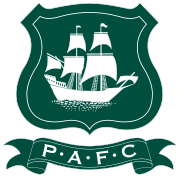
Green is the colour of Torquay’s eternal rival on the Tamar, Plymouth Argyle.
Another reason for the Devon flag not being common in the Bay may be its predominant colour. Although the flag is relatively young, its tones are those traditionally identified with Devon’s sporting teams. Green is the colour of Devon’s Rugby Union team, Exeter University and, most crucially, Torquay’s eternal rival on the Tamar, Plymouth Argyle.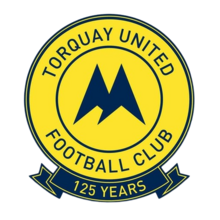
The gold of TUFC
The hue is clearly not one that can be worn with pride at Plainmoor or the Recreation Ground. Torquinians just don’t go on green.
So, if we can’t use the Devon flag, do we need our own?
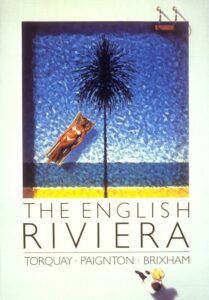
Unfortunately, we can’t use the gold of Torquay United as that’s already been swiped by the Dorset Cross, another modern invention of 2008.
Other suggestions for a Torbay flag are welcome… or should we just adopt the old tickling stick palm?
Torquay: A Social History by local author Kevin Dixon is available for £10 from Artizan Gallery, Fleet Street, Torquay, or:
https://www.art-hub.co.uk/product-page/torquay-a-social-history-by-kevin-dixon



